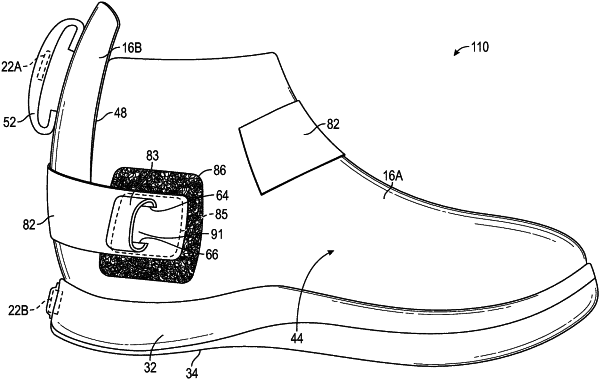| CPC A43B 3/06 (2013.01) [A43B 1/0054 (2013.01); A43B 3/242 (2013.01); A43B 11/00 (2013.01); A43B 23/0205 (2013.01); A43B 23/0245 (2013.01); A43C 11/1493 (2013.01)] | 20 Claims |

|
1. An article of footwear comprising:
a sole structure;
an upper including a first section and a second section and defining a foot-receiving cavity over the sole structure;
wherein the upper has a fold region and defines a slit extending from an edge of the upper between the first section and the second section to the fold region;
wherein the second section articulates relative to the first section at the fold region between an access position and a use position, and the foot-receiving cavity being more exposed when the second section is in the access position than when the second section is in the use position; and
a magnetic coupling including a first coupling member and a second coupling member, one of which is a magnet and the other of which comprises either of a magnet or a ferromagnetic material;
wherein the first coupling member is operatively secured to the second section of the upper and the second coupling member is operatively secured to one of the upper or the sole structure and positioned so that the first coupling member couples with the second coupling member when the second section is in the access position, the first coupling member and the second coupling member being in closer proximity to one another in the access position than in the use position, and the second section held in the access position by magnetic force between the first coupling member and the second coupling member.
|